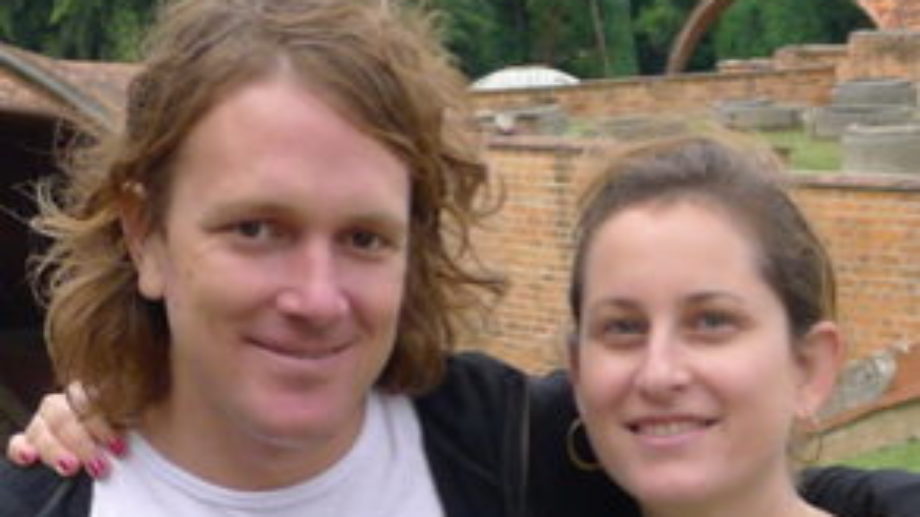
Unfinished Spaces directors Benjamin Murray and Alysa Nahmias.
One of the many enthralling documentaries in this year's Latinbeat series, Alysa Nahmias and Benjamin Murray's Unfinished Spaces tells the story behind the building of the Cuban National Art Schools in 1961. Founded by Fidel Castro and Che Guevara, the buildings were designed by Ricardo Porro, Roberto Gottardi, and Vittorio Garatti, three young architects who were given this opportunity of a lifetime. In the project's early stages, the architects went forth with fierce passion to try and create something that captured the energy of the Cuban Revolution. But as years went by, and as the country shifted towards socialism, they saw their dream fade to the point where they were unable to fully complete the project.
Directors Alysa Nahmias and Benjamin Murray certainly sympathized with such a long-gestating work, even more so than the average viewer—their film documenting these architects' experience was over a decade in the making. While in college, Nahmias went on a work-study program in Cuba where she met Ricardo Porro. “He dared me to do this project,” said Nahmias via phone earlier this week. Upon returning to school, she related the news to fellow student and film major Benjamin Murray. The two made their first trip in 2001 and began shooting their documentary later that year.
Though they went to the same school, the directors have differing academic backgrounds, which allowed for a unique collaboration on this project. While Nahmias conducted the interview, Murray would be behind the camera. One of his biggest concerns being the cinematographer on this project was not knowing Spanish. “I get nervous about filming people and not knowing what they're saying,” said Murray, but as their shooting progressed his outlook on this changed. What was once a concern became an advantage because it allowed him to “tune in to the visuals and sounds and tune out of self-editing during production… If I had known what they were saying, I would've been making sure everything was in focus for specific moments. Instead, seemingly less significant moments became crucial.”
This wasn't the only lesson learned, as Nahmias pointed out. By not knowing what the interviewees said, she felt that Ben became an “instant questioning audience,” who would push her to “see if I asked certain questions, honest questions.” Such a dynamic enabled Nahmias and Murray to improve their abilities in their respective roles, thus improving the film as a whole.

Architect Ricardo Porro in Unfinished Spaces
Such a long shoot allowed for the two filmmakers to get deeply connected with the Cuban culture and its relationship to the National Art School buildings, which, according to Nahmias, represent “Cuba's first moment of trying to create its own identity… It was the first instance of Cuban architecture, not colonized architecture.” The responsibility of Porro, Gottardi, and Garatti cannot be underestimated, as Nahmias discussed how architects “have the agency to really create spaces and not just spaces that are functional, but spaces that carry meaning for the people who live with and see them.”
To have that responsibility and opportunity cut short is one of the central reasons why the architects took to the idea of this film being made. “For them,” said Murray, “it's not about the recognition so much as it is about creating a greater dialogue so they can finish these buildings… It's not something of the past, but of the present, and looking towards the future.” This dialogue continues to grow as the film is shown to an ever-expanding audience, from the Havana International Film Festival, to here at the Film Society this weekend, to PBS this October.
Despite being unfinished, the National Art School complex is still highly regarded by the Cuban people, for whom it is not only the home to the country's top art school but also, as Nahmias described it, a “national monument.” When proposals have been made for outside architects to finish the complex or for it to become a privately-owned property, there has been resistance. The Cubans rightly feel they must “maintain their character,” said Nahmias. “It's a public building. You can't just take Central Park and privatize it. That's the equivalent for the Cubans.”
Unfinished Spaces screens Saturday at 7:00pm as part of the 13th annual Latinbeat festival, with both filmmakers in person for a Q&A! It screens again Monday at 8:35pm.



